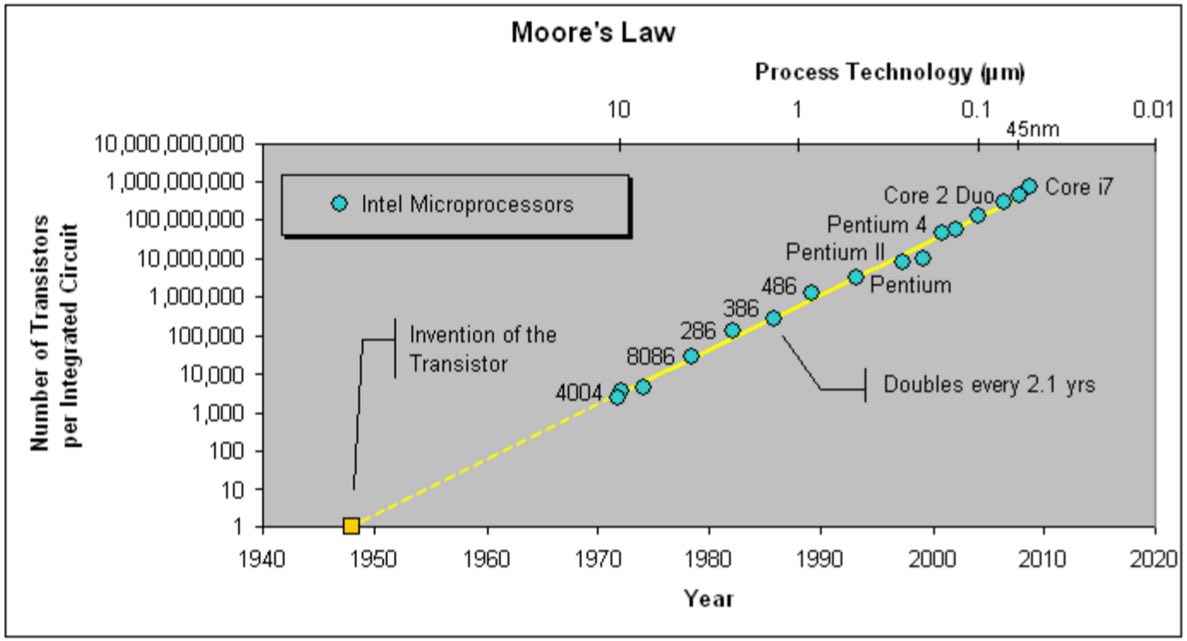Moore’s Law Is Finally Dead — How Did This Happen?


Short Bytes: 2016 will be remembered as the year when Moore’s Law died. This self-fulfilling law has managed to survive 51 years since Intel Founder Gordon Moore coined the theory in 1965. With time, the law has become largely impractical due to engineering and economic constraints. Science journal Nature says that next month — for the first time — the worldwide semiconductor industry’s R&D plans won’t be written around Moore’s Law.
People, who don’t know the background story, consider Moore’s Law an engineering necessity. However, it was just an observation made by Intel co-founder Gordon Moore that the number of components in an IC was going to double every 12 months. Slowly and gradually, this observation by Moore became a target for the silicon chip industry.
Realizing the problem with this law, Moore himself updated the law, doubling the time to 24 months. Well, sooner or later, this ill-fated law was bound to reach its limit. According to a latest article in the journal Nature, this self-fulfilling prophecy is about to come to an end. The journal writes that next month, the worldwide semiconductor industry will formally acknowledge the death of Moore’s Law.
Moore’s Law Is Finally Dead — How Did This Happen?
With time, the doubling has already started to show problems due to the heat that gets accumulated in the same area. Riding on the deliberate Moore’s Law train, the microprocessor circuits have shrunk to about 14 nanometers. But, if this shrinking race continues, the smaller form factor of devices won’t allow head to dissipate in future, thus heating your device.
Economics, another factor that accounts for this expected change, is perhaps the second biggest reason. To cultivate more transistors in a single chip, the industry needs to invest more. Each new fabrication facility asks for billions of dollars, and companies are finding it hard to resonate.
Describing the “what’s next” aspect of the story, Nature says that next month — for the first time — the worldwide semiconductor industry’s R&D plans won’t be written around Moore’s Law.
“Instead, it will follow what might be called the More than Moore strategy: rather than making the chips better and letting the applications follow, it will start with applications — from smartphones and supercomputers to data centres in the cloud — and work downwards to see what chips are needed to support them,” writes Nature.
What do you expect? Become a part of the discussion via the comments section below.
— Nature
Also read: Scientists Make World’s Thinnest Transistor, Extends Life of Moore’s Law






